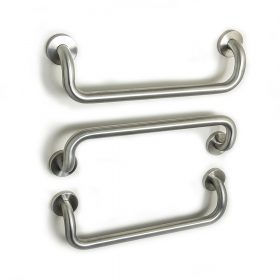For the elderly, bathrooms are often considered the most dangerous rooms in the house.
Families face numerous hazards in the bathroom, such as slips and falls. Family caregivers are strongly encouraged to inspect the bathroom for safety issues since so many falls occur there. With a few simple changes, you can make the bathroom a safe and comfortable place for everyone.
 THE SHOWER
THE SHOWER
Showers and walls should be equipped with sturdy grab bars anchored to wall studs so they can support the full weight of an adult. The suction cups on some portable safety handles make them easy to attach and remove.
Shower chairs are also a safe solution for people who have difficulty maintaining their balance.
It might be easier to use a flexible handheld shower wand with an on/off button than a traditional shower head. In conjunction with shower chairs, these are especially useful.
The majority of medical alert buttons are sufficiently waterproof to be worn in the shower. The shower is the leading cause of bathroom falls, so always have yours handy.
THE BATHTUB
Install a walk-in shower in place of an unused bathtub. In many homes, standard bathtubs and showers are too high for elderly and disabled people to get in and out of, and too low for them to sit down.
Water heaters should be set at 120 degrees Fahrenheit or lower to prevent scalding. Special no-scald faucets or a no-scald regulator can be installed as a secondary layer of protection.
As an alternative, you can install a walk-in tub that resembles a spa. Having a walk-in bathtub or shower with a built-in seat restores some independence in self-care. There are many walk-in tubs on the market that are designed to fit within the space of a conventional tub to make installation easy. In addition, many walk-in tubs come with luxurious special features.
THE FLOOR
A shower or bathtub floor can be made nonskid by installing nonskid tape or mats.
Ensure bath mats are slip-proof and don’t create tripping hazards.
THE TOILET
To reduce the chance of a harsh fall, you can replace your toilet with a taller, ADA-approved raised-height model. You can also install raised-height toilet seats on existing toilets.
Most toilets have a bowl height of 15 inches, but many manufacturers have recently introduced models that are an inch and a half higher. The taller commodes make it easier for the body to get up and down after sitting down.
It is a good idea to keep an extra medical alert button near the toilet so they can summon help quickly if needed.
THE SINK
Hands with arthritis have difficulty gripping and turning some faucet handles. ADA-compliant faucets are easier to operate for seniors.
Additionally, this faucet style has an adjustable hot limit safety stop to prevent scalding.
Adding this simple and inexpensive modification makes washing up more comfortable for elderly family members, as well as enhancing the look of your bathroom.
STORAGE
Consider accessible storage options. Keep bathing and grooming accessories neatly stacked out of the way to prevent trips and falls.
Bathroom storage options should be accessible and functional.
Vanities offer ample storage within a smaller footprint, allowing them to conceal hair dryers, towels, bath products, and cleaning supplies to make any room appear bigger.
Adding a small cabinet to the wall or on top of the tank is a valuable piece of bathroom real estate.
For better visibility, introduce matte finishes to high-gloss paints and tiles. Colors or patterns on the walls and floor should contrast to help older adults perceive space and feel more confident.



